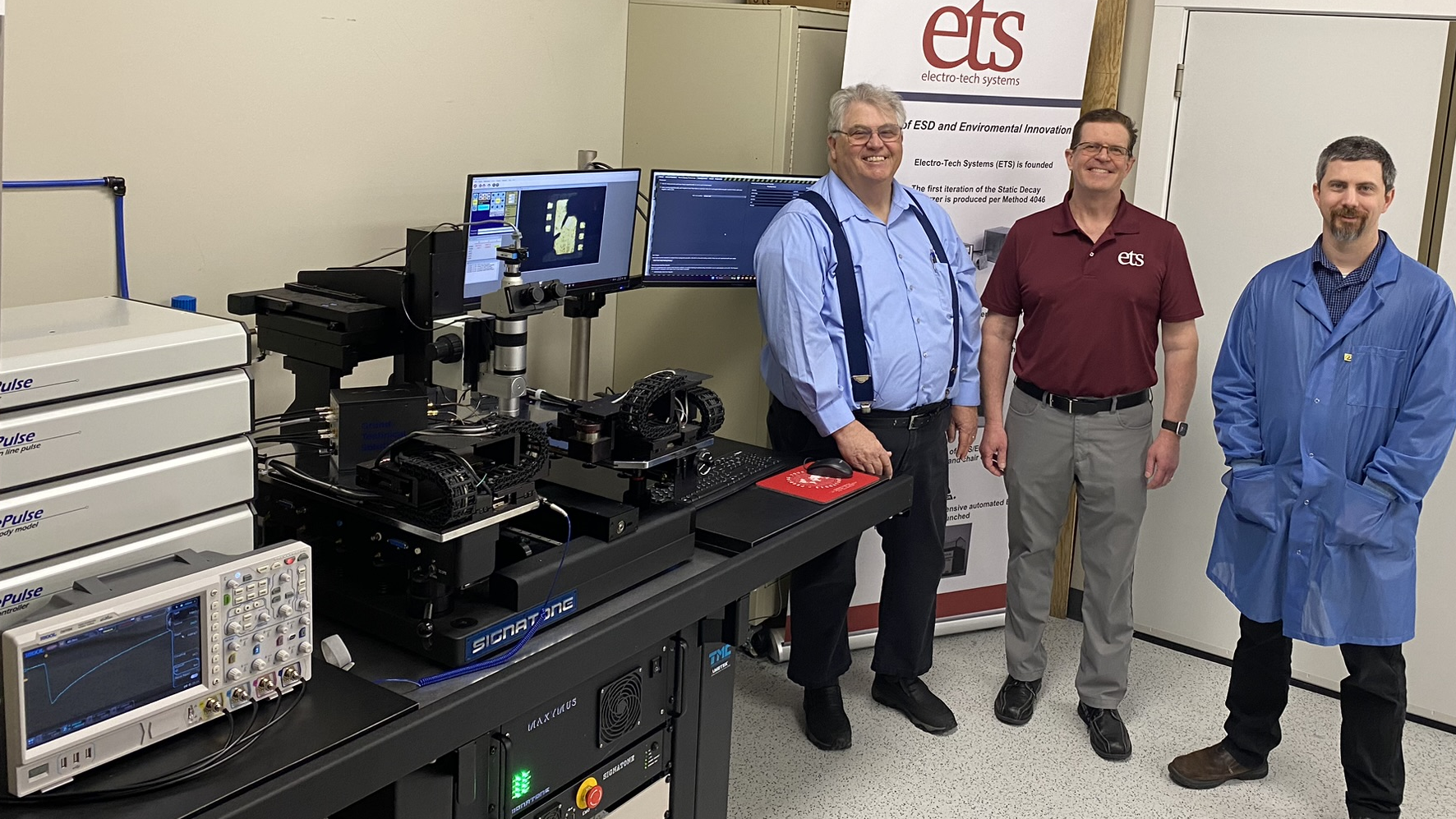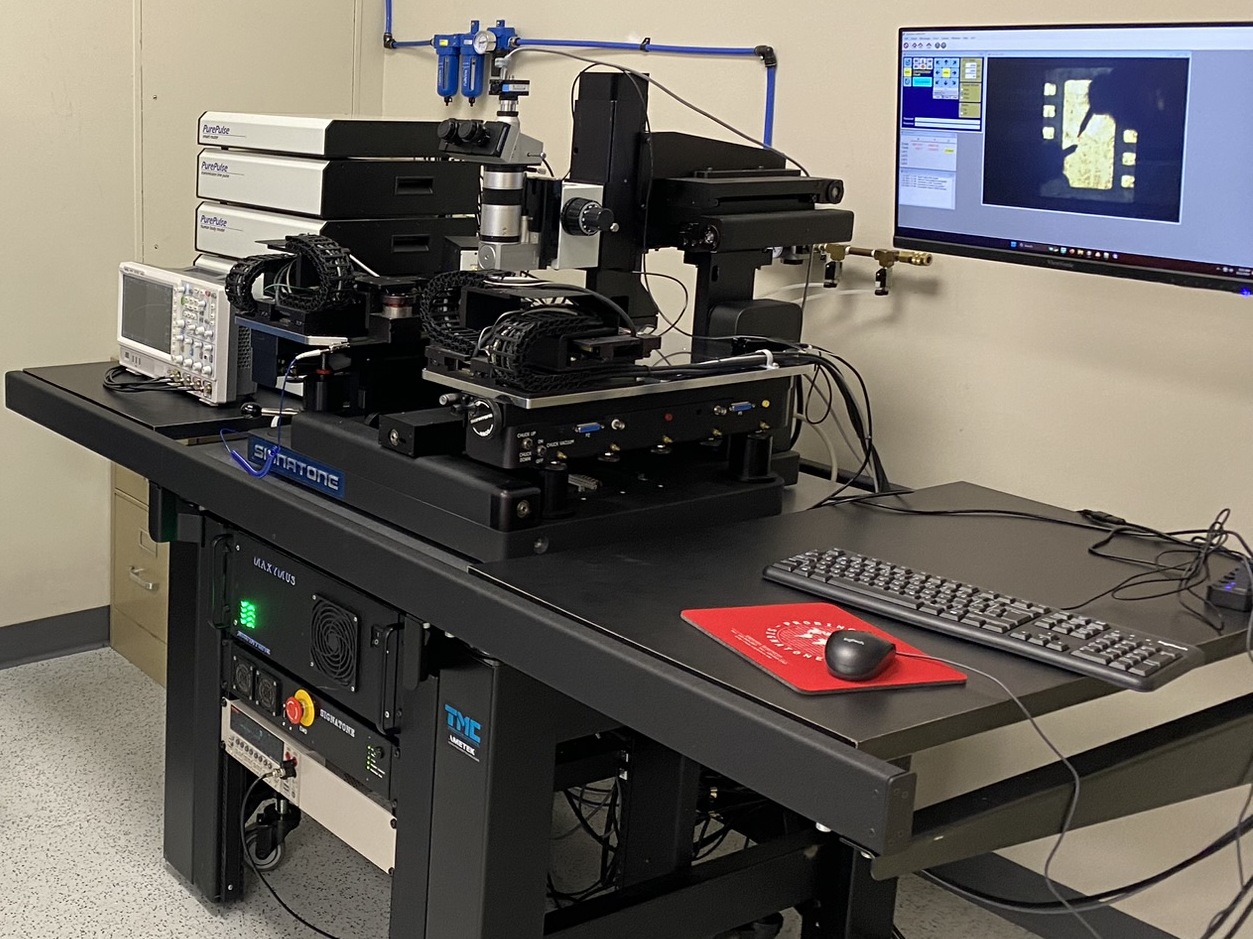Electro-Tech Systems, Inc. (ETS) and Grund Technical Solutions (GTS) are proud to partner in establishing a premier ESD test laboratory for device and wafer level testing.
For over 40 years, ETS has been a world leader in designing, manufacturing, and supplying electrostatic test instruments, along with ISO 17025 accredited ESD testing services. Since 2008, GTS has established itself as a trusted partner for leading industry players, offering cutting-edge ESD testers and pioneering 2-Pin testing methodologies. The combination of leading industry players provides a level of testing capability and resources unmatched by any other ESD test facility.
The ETS Testing Center utilizes a fully automated, flexible, and efficient GTS PurePulse 2-pin ESD Tester designed from the ground up to enable customized testing to meet your device and wafer testing needs. PurePulse 2-pin style setup reduces testing parasitics, captures waveform data, and can be automated to test thousands of pins.Testing capabilities include fully automated Human Body Model (HBM) and Transmission Line Pulsing (TLP).


